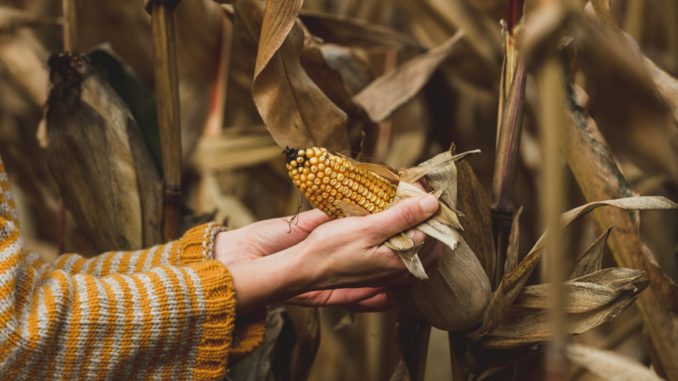
It’s nothing new.
The term regenerative agriculture has been around for more than 80 years but with the very real threat of climate change, the words have taken on new importance. The United States Congress called the waste of soil and moisture resources in farmland across the country a “menace to the national welfare.” Early in the 1930s, Congress reacted by establishing what has become NRCS, the National Resources Conservation Service, confirming the government’s commitment to conserving the nation’s soil and water resources.
The first soil experiment stations were established as early as 1929 and in 1932, under President Roosevelt’s New Deal, demonstration projects in eroded areas pointed out the benefits of soil conversation with farmers experiencing the devastating effects of the Dust Bowl. Widespread crop failures had exposed the soil to blowing winds noticed as far away as Washington DC and 300 miles out into the Atlantic Ocean.
By 1936 the government had initiated plans for flood control, drainage, and irrigation. Three thousand conservation districts were established across the country. A thousand dams were built on 2,000 watershed projects.
A drought in the 1950s resulted in the Great Plains Conservation Act that provided financial assistance to farmers for retiring cropland and planting protective cover crops. More laws were passed in the 1960s and the first Earth Day was held in 1970. Another farm crisis in the 1990s resulted in establishing tillage practices and restoration projects worked to select seeds and plants suitable for reviving wetlands and prairies.
More financial help and innovative programs aimed at evaluating conservation issues were undertaken by the government in that decade. And still, solutions remained elusive.
Today concerns with global warming have come increasingly to the forefront making efforts to promote regenerative agriculture more important than ever before.
Ecologist Mark Easter, senior research associate for the National Research Ecology Laboratory based at Colorado State University, has spent a 20-year career addressing issues surrounding the carbon footprint created in the course of producing food. “Microbes are at the center of the food system,” he explains. “They play a critical role in soil health. He travels the world sharing with farmers ways to produce more nutritious crops with better yields and with the use of less fertilizer.
Carbon, a greenhouse gas that forms in the atmosphere, is the cornerstone of soil health and, unless it is returned to the soil, is a prime offender in the creation of global warming. Reducing agriculture’s carbon footprint is a major concern for Easter. “The challenge is to remove greenhouse gases from the atmosphere and return them to the soil,” Easter says.
The Mad Agriculture organization, formed recently in Boulder, Colorado, is dedicated to reimagining and restoring agriculture’s relationship with the earth through story, community, and the practice of good agriculture. They advocate a radical reworking of the economy with the goal of rebalancing the carbon cycle as a way to confront the effects of climate change. Powered by a group of dedicated individuals in Northern Colorado, Mad Agriculture holds informative seminars, works with area farmers, and publishes an informative magazine.
Nancy Stark, owner of Golden Hoof Farm in Boulder County, describes helpful practices. She advocates developing relationships with restaurants and feeding leftover food to farm animals to reduce food waste, improve soil and plant health, increase capacity for carbon absorption, and conserve water. Specific grazing techniques encourage regeneration of the soil. She promotes developing relationships to discover valuable markets for selling food products directly to customers.
Boulder County and Colorado State University have partnered to test carbon farming practices at Paul Schlagel’s 140-acre cornfield on his Quick Siver Farm in Longmont. This farmer planted a cover crop to prevent soil erosion and retain soil nutrients during the winter months, then planted corn into a field filled with compost provided by the cover crop.
In Fort Collins, Amy A. Yackel and Rod D. Adams operate a 4.5-acre urban farm in a residential area not far from downtown. Their website describes
“A small urban farm with big ideas about regenerative agricultural practices committed to producing nutrient-rich food.” In business since 2008, Sunspot Urban Farm builds biologically rich soil using fertilizer produced on-site. The farm produces 40 fruit and vegetable crops and operates a local CSA for 25 families. Because so many of their customers are their neighbors, Yackel and Adams like to call their business an NSA, neighborhood supported agriculture. They offer tours, workshops, an autumn leaf drop, and provide solar panels and supplies for pollinator gardens.
Individuals can address the challenges of creating healthier soil and food and reducing greenhouse gases in the atmosphere in many different ways. Among them are planting a garden, consuming a plant-based diet, buying food directly from producers and farmers’ markets, and becoming conscious of their own carbon footprint.
Support Northern Colorado Journalism
Show your support for North Forty News by helping us produce more content. It's a kind and simple gesture that will help us continue to bring more content to you.
BONUS - Donors get a link in their receipt to sign up for our once-per-week instant text messaging alert. Get your e-copy of North Forty News the moment it is released!
Click to Donate
